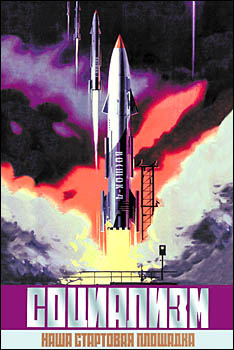
"Socialism is what serves as the reliable launching pad from which the Soviet Union sends its powerful, advanced space ships into outer space."Newspaper Pravda, 17 August 1962 |
In August 1964, trying to catch up with the Apollo program, the Soviet Union launched its own lunar project. A new spacecraft code named 7K-L1 (later publicly named Zond) was developed for a circumlunar flight. It included - for the first time in a Soviet piloted spacecraft - an onboard electronic digital computer, the Argon-11S. Like its American counterpart, the Apollo Guidance Computer, the Argon was a radical innovation, which posed many difficult questions of technology, organization, and man-machine interaction. This website complements the Apollo Guidance Computer History Project by documenting the history of onboard computers and man-machine interaction in the Soviet space program. The aim of this website is to use web technology to create a dynamic multi-thread interactive historical account of computers, institutions, and personalities involved in one of the most advanced technological projects of the twentieth century with limited technical resources and under strong political pressure. The Iron Curtain separated the Apollo and the Argon computer projects from each other. This website aspires to bring American and Russian veteran engineers together for a meaningful dialogue. This material is based upon work supported by the National Science Foundation (NSF) under Grant No. 0313044. Any opinions, findings and conclusions or recommendations expressed in this material are those of the author(s) and do not necessarily reflect the views of the NSF. For a detailed layout of the site, see sitemap.
|